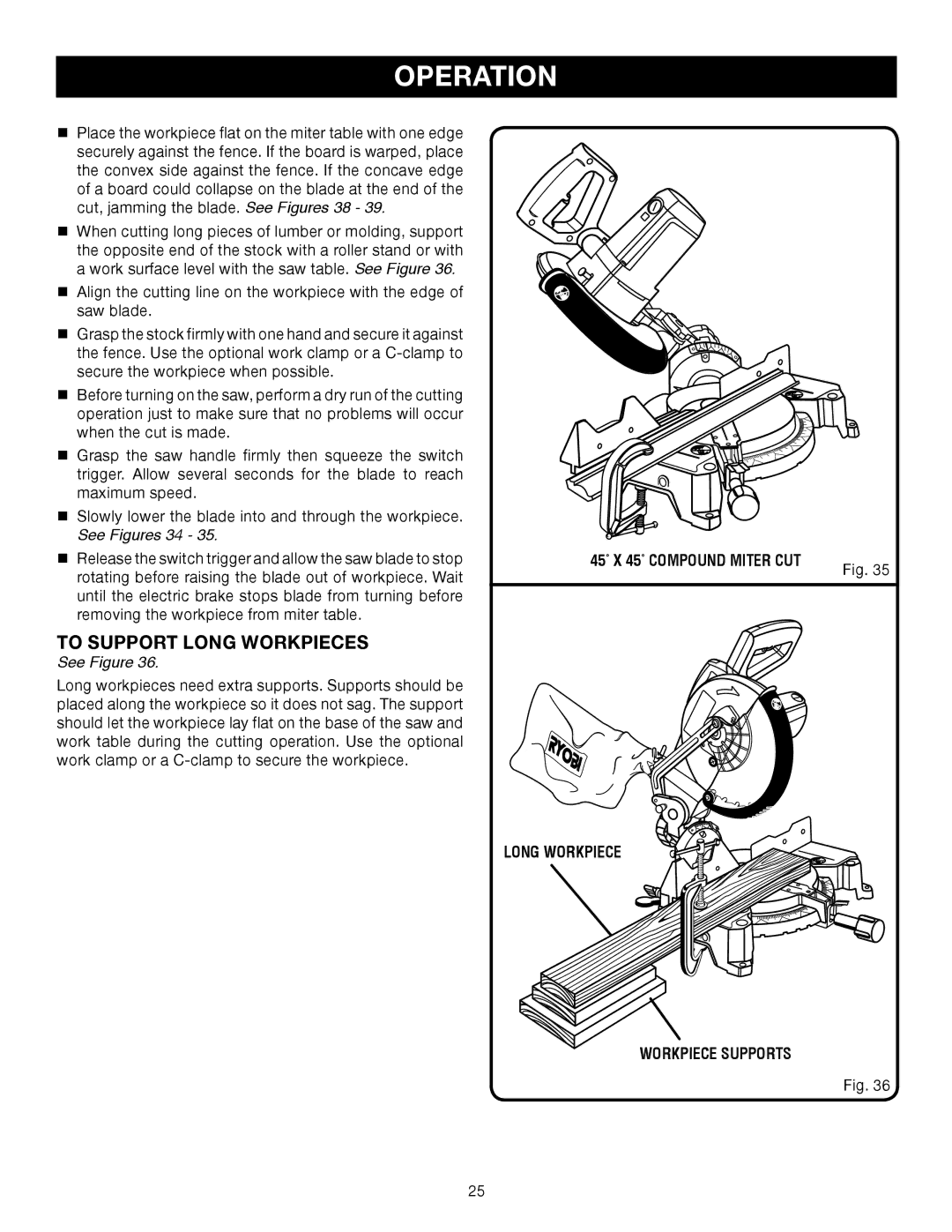
OPERATION
nPlace the workpiece flat on the miter table with one edge securely against the fence. If the board is warped, place
the convex side against the fence. If the concave edge of a board could collapse on the blade at the end of the cut, jamming the blade. See Figures 38 - 39.
n When cutting long pieces of lumber or molding, support |
|
|
the opposite end of the stock with a roller stand or with |
|
|
a work surface level with the saw table. See Figure 36. |
|
|
n Align the cutting line on the workpiece with the edge of |
|
|
saw blade. |
|
|
n Grasp the stock firmly with one hand and secure it against |
|
|
the fence. Use the optional work clamp or a |
|
|
secure the workpiece when possible. |
|
|
n Before turning on the saw, perform a dry run of the cutting |
|
|
operation just to make sure that no problems will occur |
|
|
when the cut is made. |
|
|
n Grasp the saw handle firmly then squeeze the switch |
|
|
trigger. Allow several seconds for the blade to reach |
|
|
maximum speed. |
|
|
n Slowly lower the blade into and through the workpiece. |
|
|
See Figures 34 - 35. |
|
|
n Release the switch trigger and allow the saw blade to stop | 45° X 45° COMPOUND MITER CUT | Fig. 35 |
rotating before raising the blade out of workpiece. Wait |
| |
|
| |
until the electric brake stops blade from turning before |
|
|
removing the workpiece from miter table. |
|
|
TO SUPPORT LONG WORKPIECES
See Figure 36.
Long workpieces need extra supports. Supports should be placed along the workpiece so it does not sag. The support should let the workpiece lay flat on the base of the saw and work table during the cutting operation. Use the optional work clamp or a
LONG WORKPIECE
WORKPIECE SUPPORTS
Fig. 36
25
